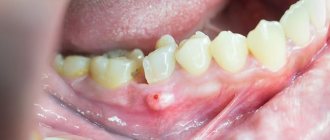Have you had accidental unprotected sexual contact with an unknown partner? Has the condom broken or is it known that your partner has sexually transmitted diseases? Then you urgently need drug prevention after an accidental relationship!
In fact, neither a condom nor antiseptics used after sexual intercourse protect against sexually transmitted diseases with 100% probability. We know of many tragic cases of infection with syphilis, gonorrhea, pubic lice and scabies in patients who used a condom and were treated with an antiseptic solution.
What is Chlorhexidine used for?
An aqueous solution is prescribed to be taken in the following cases:
- cervical erosion;
- for the prevention of syphilis, genital herpes and other vaginal diseases;
- disinfection of dentures, disinfection of wounds;
- various diseases of the oral cavity.
An alcohol solution is used to treat hands and medical devices before surgery. The solution is also used to treat the working surface of medical equipment.
Vaginal suppositories are effective for the following conditions:
- in order to prevent infections that can be transmitted as a result of unprotected sexual intercourse;
- bacterial vaginosis;
- prevention of inflammation and infections before surgery, childbirth or abortion.
Prevention after casual relationships Gardnerella Gardnerrella vaginalis
Prevention of gardnerella is necessary when there has been contact with a man or woman in whom gardnerella was detected in an STI test, or it is not known at all whether this sexual partner is healthy.
Standard comprehensive prevention of STDs after casual sex usually includes drugs to kill Gardnerella. But sometimes it is necessary to carry out isolated prevention of gardnerellosis, when there is a risk of contracting only this particular infection.
Gardnerella is an opportunistic infection that causes bacterial vaginosis in women, and can provoke balanoposthitis and prostatitis in men. But very often gardnerellosis occurs latently and asymptomatically, which leads to a massive spread of infection.
Prevention of gardnerella is carried out for all men who have sexual contact with women with bacterial vaginosis, and for all women who have had sexual intercourse with a partner who has gardnerella urethritis, prostatitis or balanoposthitis.
Before preventing gardnerellosis, a gardnerella test is performed. Ideally, a smear on the flora and PCR diagnostics are done, but in some cases they are limited to an express smear, which provides information about the inflammatory process and the presence of gardnerella in the vagina, urethra or on the skin of the penis within 20–30 minutes.
If gardnerella is not detected in the smear, then prophylaxis is carried out. If it is found, then prophylaxis is not prescribed, but its specific therapy is developed.
Typically, STD prevention after a casual relationship is carried out on the day of the patient’s initial appointment. The same applies to measures to prevent gardnerellosis.
It is important to carry out the procedures while the pathogen is in the incubation period and is not detected in tests.
How to use Chlorhexidine in gynecology
The product is actively used to prevent sexually transmitted diseases. No later than 2 hours after unprotected intercourse, you need to take the solution. Men will need to insert 2 ml into the urinary canal, and women will need to insert 2 ml into the urinary canal and another 5-7 ml into the vagina. It is recommended to wipe the skin around the genitals with the solution. The instructions say that after using the drug you need to wait 2 hours before urinating. Otherwise, the effect of use will be less.
For preventive purposes, vaginal suppositories can be used.
Before using the product for thrush and other gynecological pathologies, you should consult a specialist in advance.
Random connection. What is the risk of sexually transmitted infection?
The best protection against diseases that arise “because of love” is true love and loyalty to your partner. Unfortunately, it is difficult to find your soulmate in our huge world. And catching STIs (sexually transmitted infections) is quite easy.
Why are STIs easily transmitted?
The fact is that against the background of the widespread use of antibiotics and anti-inflammatory drugs, the symptoms of any sexually transmitted infection can be blurred. That is, a person can be sure that he is healthy, but in fact be a carrier of chlamydia and infect his sexual partner with this infection. How to regain your peace of mind if changes have occurred in your life or you think you might have encountered sexually transmitted infections? Of course, there is only one way - to be examined in a timely and high-quality manner.
When is it time to go get tested after a suspicious contact?
If there are symptoms of discomfort, then it’s time to get examined. If there are no alarming symptoms, it is better to wait a couple of weeks. The fact is that the sensitivity of tests in the first days after infection is very low. But if symptoms have already arisen, there is definitely no point in postponing testing.
What tests should be taken if there is a suspicion of a sexually transmitted infection?
First of all, you need to be examined for chlamydia (causes chlamydia), gonococcus (the culprit of gonorrhea), mycoplasma genitalium (causes mycoplasma infection) and trichomonas (the cause of trichomoniasis). These are the four causative agents of the most common sexually transmitted infections. The symptoms of these diseases are similar and if they are detected, it is necessary to be treated, because their consequences can be very serious. For analysis, a urogenital scraping is taken (in men from the urethra, in women - vaginal), the analysis must be done using the PCR method, this method is the most accurate and sensitive in this case.
How dangerous are sexually transmitted diseases?
Chlamydia most often causes urogenital chlamydia, which affects the genitourinary tract. Both men and women suffer from it, but in women this infection is diagnosed more often, perhaps because women are more attentive to their health. Among the numerous complications, the most famous are endometritis and infertility in women and epididymitis in men, as well as reactive arthritis and conjunctivitis in people of both sexes. Chlamydia is most dangerous for pregnant women, as it leads to miscarriages, prematurity or fetal death.
Another common sexually transmitted disease is gonorrhea (gonococcal infection). Chronic gonorrhea is dangerous by affecting the bladder, kidneys, prostate and testicles in men, and the uterus and fallopian tubes in women.
The third infection, trichomoniasis, causes prostatitis, urethritis, and damage to the seminal vesicles and epididymis in men. In women - urethritis, inflammation of the vagina and cervix.
Finally, mycoplasma causes pelvic inflammatory disease, urethritis and other diseases. Not to mention that all four of these infections can complicate the course of pregnancy and its onset.
How long does it usually take from infection to the appearance of symptoms of an STI?
The acute form of chlamydia begins 2-4 weeks after the incubation period. Mycoplasma can detect itself a little later - 3-5 weeks after infection. Gonorrhea and trichomoniasis usually appear much earlier. As a rule, with any genital infections, pain, burning, purulent or mucous discharge from the genitals occur, and sometimes even a slight (low-grade) fever. Knowing this, some people are wary for a month, and if nothing like this happens to them, they calm down. But in vain, because in half of the cases, sexually transmitted infections are asymptomatic or with minor manifestations, which often disappear when the infection becomes chronic. However, these diseases are very rarely cured on their own. The earlier any of the sexually transmitted infections is detected, the faster and more successfully it will be possible to recover, which, alas, cannot be said about advanced forms, which are very difficult to get rid of, as well as the complications they cause. Therefore, it is better not to delay too much with the tests. To determine the maximum range of possible pathogens of sexually transmitted infections, you can use a comprehensive laboratory test - DNA of STD pathogens.
Says that provocation in the form of beer, salty or spicy food before the study increases the accuracy of the study?
Any such provocation can aggravate existing chronic diseases of the gastrointestinal tract, liver and kidneys. This action will not affect the accuracy of detecting sexually transmitted infections. From the standpoint of evidence-based medicine, the use of biological, chemical and food provocations in order to increase the efficiency of diagnosis of urogenital trichomoniasis and other STIs is completely inappropriate. To ensure that the analysis does not deceive, you just need to do it using the appropriate method. For example, the Russian Association of Dermatovenerologists recommends using only real-time PCR for this purpose, as the most sensitive, specific and fastest diagnostic method. For analysis, in women, as a rule, a vaginal scraping or a scraping from the cervical canal is taken, in men - a smear from the urethra. Then the DNA of the pathogen is isolated using PCR. In 1-2 days the analysis will be ready. The PCR method is excellent for the primary diagnosis of an existing disease; to use it for monitoring after treatment, you need to understand the essence of the method. Antibiotics kill the causative agent of STIs, but its DNA (genetic material) can remain in the epithelial cells of the urogenital tract for another couple of weeks. Therefore, it is impossible to do a control test early after the end of the course of treatment, since the possibility of obtaining a false positive result cannot be ruled out. You need to pause before taking the test: at least 3 weeks after taking the last pill.
Contraindications and adverse reactions
Taking the drug is contraindicated in the following cases:
- increased susceptibility to the components included in the composition;
- patients with dermatitis;
- simultaneous use with other antiseptics, for example, hydrogen peroxide;
- in ophthalmology for washing the eyes.
It is better to refrain from using the product to disinfect the surgical field before or after surgery on the central nervous system and auditory canal.
In pediatrics, the drug is used with great caution.
Some patients may experience undesirable reactions such as:
- dry skin;
- allergic skin rashes;
- itching of the skin;
- light sensitivity.
With prolonged use of the product in dentistry, changes in taste may occur, tartar may appear, or teeth may become stained.
How is gardnerellosis prevented?
- After examination by a venereologist and a negative test for gardnerella, the patient is sent to the treatment room.
- A drug, usually from the group of imidazoles, is administered intravenously at the maximum therapeutic dose.
- Next, in the urology office, the doctor instills a silver preparation into the urethra or a vaginal bath with an antiseptic solution and imidazole. An antibacterial cream or gel is placed in the vagina.
- Tablets may also be given to your home.
- A week later, a gardnerella test is taken to check the effectiveness of the prevention.
Prevention of Gardnerella is especially important for women with impaired vaginal microflora. If their sexual partner introduces gardnerella into the vagina, then a relapse of bakvaginosis will occur, which will require long-term complex treatment.
Prevention of gardnerellosis after casual relationships is effectively carried out only in a clinic under the supervision of a venereologist or gynecologist. Self-medication and self-prevention with medications usually lead to the development of chronic STDs.
The cost of STD prevention is from 1000 rubles. Instillation into the urethra and vaginal bath - 800 rubles.
How is herpes prevented after casual relationships?
It is advisable to start it immediately after contact, treating the skin and mucous membranes of the genital organs with antiseptic solutions of miramistin and chlorhexidine. You can also apply one of the antiherpetic creams and immediately consult a venereologist at the clinic, where they will carry out full prevention after sexual intercourse, which includes:
- Examination by a doctor to check for STD symptoms.
- Express smear for flora.
- Express tests for syphilis, HIV, hepatitis.
- PCR analysis for STIs and herpes including.
- Blood test for antibodies to herpes viruses.
- Intravenous or intramuscular administration of abnormal nucleosides, interferon, interferon inducers to block the reproduction and spread of the virus in tissues. Dosages and course duration are determined by a venereologist. The results of laboratory diagnostics are taken into account.
- If there are no manifestations of herpes infection, after 3 weeks, blood is donated for immunoglobulin M for all types of herpes, and a month later the blood test is repeated with the addition of immunoglobulin G.
- If the results are negative, prevention of genital herpes is considered effective.
Prevention of STDs after a casual relationship should be carried out exclusively in a clinic under the supervision of a venereologist. Doing this at home is unacceptable! The result of self-medication can be unpredictable - from the transition of the infection to the chronic stage, to anaphylactic shock to drugs.
The cost of herpes prevention is from 1000 to 5000 rubles, depending on the chosen regimen and route of drug administration.
Diagnosis of chlamydia
As is the case with many other diseases, especially gynecological ones, regular visits to the doctor and timely diagnosis of chlamydia will help avoid many negative side effects. If you have an active sexual life, it is recommended to test for chlamydia at least once a year.
Diagnosis of chlamydia is primarily related to:
- with cytological analyzes of smears from the infected area.
- with bacterial seeding of cells from scrapings (makes it possible to perform an antibiogram - the sensitivity of infectious cells to certain drugs).
- with PCR analysis of cells from affected areas (polymerase chain reaction) - allows you to isolate chlamydia DNA fragments and determine the type of microorganisms.
- with a blood test - analysis for chlamydia, assessment of the level of immunoglobulins IgM and IgG (antibodies) - formed in the human blood during infection under the influence of foreign proteins (antigens).
Diagnosis and prevention of the virus
Prevention methods are divided into “home” and medicinal. In the first case, you may not only not get rid of the virus, but also provoke the development of other pathologies. Even after measures taken at home, it is necessary to be diagnosed for the presence of the virus. It can only be detected using laboratory tests. Our clinic has modern equipment that eliminates misdiagnosis and helps to quickly detect the disease.
Prevention of cytomegalovirus is carried out with medication for several days. This is the most reliable way. Our clinic employs highly qualified specialists who successfully prevent infection after casual relationships:
- Drugs are prescribed to prevent the activation of the virus or the development of infection.
- Antibiotics are selected individually, taking into account contraindications and other medications.
- The genitals (externally and internally) are treated with special solutions, which significantly reduces the risk of infection. Douching is done, followed by the prescription of agents that restore the vaginal microflora.
- A vitamin complex is selected to restore or strengthen the immune system.
- Prophylactic treatment is provided for several days.
- An examination is carried out by a venereologist and urologist-andrologist.
- All laboratory tests are performed (blood, saliva, urine testing, smears are taken). The results will be ready within 24 hours.
- Intramuscular and intravenous administration of necessary drugs. Patients undergo allergy tests in advance.
Our specialists will inform you about effective ways to prevent possible infection and recommend medications that can be taken after casual relationships without harm to health.
Cytomegalovirus, once it enters the body, is practically incurable. However, it is possible to prevent the activation of the pathological process. We suggest visiting our Private Practice clinic and completing a full course of prevention with the involvement of all the necessary specialists. Due to the presence of our own laboratory, test results are guaranteed to be accurate and fast.
Where to go?
It is best to go to a dermatovenereal dispensary or a specialized medical center, where you can get advice from a dermatovenerologist. The fact is that gynecologists, urologists, and family doctors can deal with STIs, but so far in our country there are no unified concepts for the treatment of STIs. And they are best mastered and supported by practice in specialized medical institutions.









